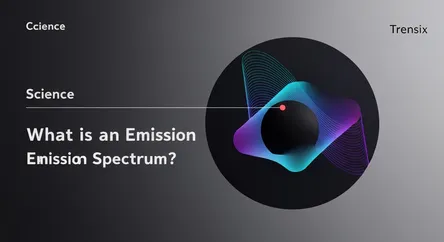Science
What is an Emission Spectrum?

Discover the unique light "fingerprint" of elements. Learn how emission spectra help us identify the chemical makeup of stars, materials, and more.
What is it?
An emission spectrum is the unique pattern of frequencies of electromagnetic radiation emitted by an atom or molecule when its electrons move from a higher energy state to a lower one. When atoms are energized, their electrons jump to unstable higher levels. As they return to a more stable state, they release energy as photons, creating light. When viewed through a spectroscope, this light appears as a series of distinct bright lines against a dark background. Each element has a characteristic line spectrum that acts as a unique chemical "fingerprint," allowing for its identification.
Why is it trending?
The principle of emission spectra is a cornerstone of modern science and technology with ever-expanding applications. In astronomy, it's essential for determining the chemical composition of distant stars, galaxies, and nebulae. Industries rely heavily on emission spectroscopy for quality control in metallurgy to analyze the exact composition of iron, steel, and other alloys. The technique is also fundamental in environmental monitoring to identify pollutants and in forensic science for analyzing unknown substances. Its reliability and precision ensure its continued importance across various scientific fields.
How does it affect people?
Emission spectra impact technology, science, and even entertainment. The vibrant colors of fireworks and neon signs are practical applications, where specific elements are heated to produce their characteristic light. This principle is vital for quality control in manufacturing, ensuring the materials used in cars and electronics meet precise standards. Furthermore, emission spectrum analysis is how we have learned the composition of celestial bodies, fundamentally shaping our understanding of the universe. It is also used in medical and biological fields to analyze the elemental makeup of samples.